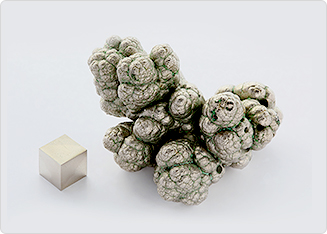The company improves customer value through ceaseless product / technology development.
 >
Process & Products >Information on nickel >The Origin of Nickel
>
Process & Products >Information on nickel >The Origin of Nickel


History of Nickel Called Devil’s Copper (Kupfevnickel)
A.F. Cronstedt, a Swedish mineralogist, separated nickel from a mineral specimen brought from Germany in 1751. The first nickel that he acquired was so similar to copper that it was difficult to distinguish it from copper at a glance. As it was treated as a copper pipe that cannot be smelted at that time, it was nicknamed as Kupfevnicke meaning Devil’s Copper. German mine workers came up with the nickname considering it as Nick Alt, a legendary mischievous spirit known to appear in remote mine and haze miners.